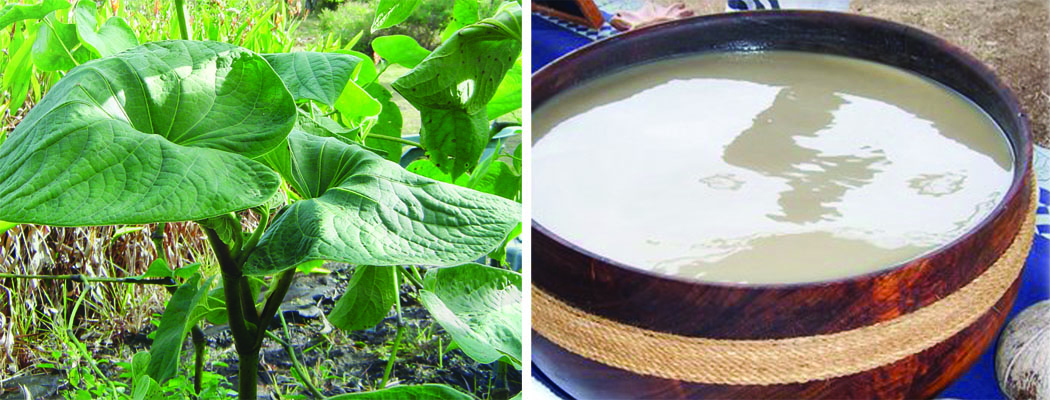The Secrets of Generations: How Slack Key Guitar Grew Community and Culture
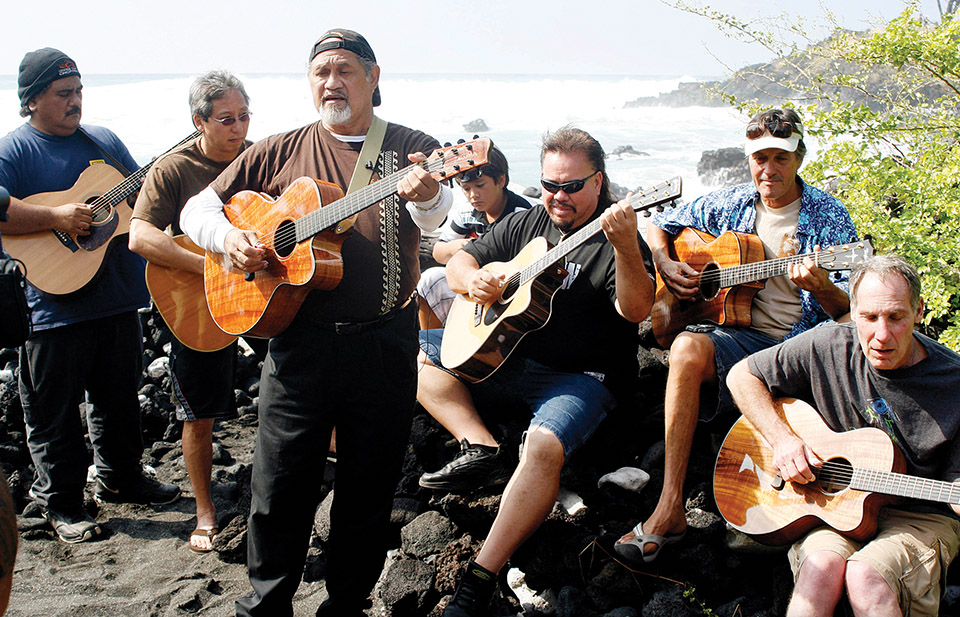 By Le‘a Gleason
By Le‘a Gleason
Anyone who’s grown up or even visited Hawai‘i will notice one thing: here in these islands, it is never silent. Instead, the air is filled with a rich array of sounds—from the din of wild roosters crowing to the chatter of someone’s aunty speaking pidgin—our culture tingles with sounds that enliven the heart. And there is one sound, one so steeped in Hawaiian culture, that it is an unmistakable representation of the Hawaiian people, their hearts and breath: slack key guitar.

Quite simply, slack key guitar is a style of playing acoustic guitar, and it is one that has secured deep roots in Hawai‘i over time. In Hawaiian, it’s referred to as kī hō‘alu, which means, “loosen the key.” Some mystery surrounds the story of how the art of slack key guitar came to the Hawaiian Islands, however it is supposed that the six-string guitar was probably originally introduced to the Hawaiians by European sailors around the beginning of the 19th century.
Guitars were also brought to Hawai‘i by Mexican and Spanish vaqueros (cowboys) hired by King Kamehameha III around 1832.
In the evenings around the campfire, the vaqueros played their guitars, and when they returned to the mainland, some of them gave their guitars to the Hawaiians. The Hawaiians incorporated what they had learned of the Mexican and Spanish music into their traditional chants, songs, and rhythms, and over time, it blended into a new sound.
The Hawaiians developed a way to get a full sound on just one guitar by picking the bass and rhythm chords on the lower three or four pitched strings with the thumb while playing the melody or improvised melodic fills on the upper two or three pitched strings.
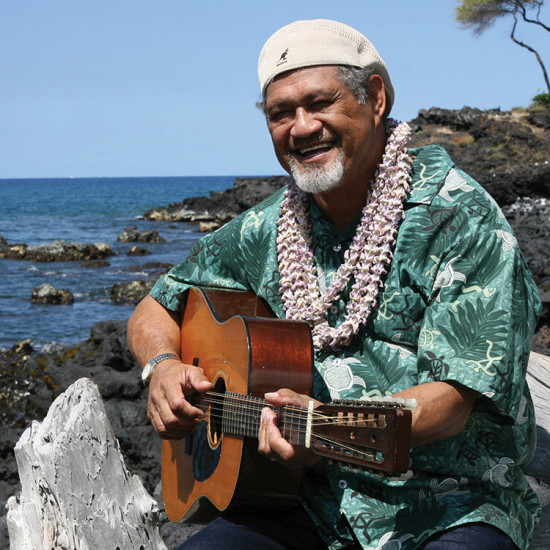
The slack key tradition was also highly supported by King David Kalākaua, who was responsible for the Hawaiian cultural resurgence of the 1880s and 1890s. Kalākaua believed the revitalization of traditional culture was at the root of the survival of the Hawaiian kingdom. Kalākaua was succeeded by his sister, and last reigning monarch of Hawai‘i Queen Lili‘uokalani, who is revered as “the greatest composer of this period.”
Over time, a wide variety of styles and tunings developed. The Hawaiians often used the standard Spanish tuning (E-A-D-G-B-E, from lowest-to-highest-pitched string), resulting in sweet sounding tunings with “slacked” open (unfretted) strings. Or, the guitar was tuned to a major chord, like the popular G Major “Taro Patch” tuning (D-G-D-G-B-D) The tunings the Hawaiians invented fall into five basic categories: Major, Wahine, Mauna Loa, Ni‘ihau/Old Mauna Loa, and miscellaneous.
Although slack key tunings are widely known now, that wasn’t the case when music legends Keola Beamer, Cyril Pahinui, and others were learning to play in the 1950s.
Cyril’s father, Gabby Pahinui is known as one of the great slack key legends. Gabby was born and raised on O‘ahu into a humble working-class family. He only attended school up to fifth-grade, when he dropped out to begin working to support the family.

Gabby’s stepmother bought him a guitar that cost somewhere between five and ten dollars, and he began playing Hawaiian music in bars at just 13. He went on to learn slack key guitar from Herman Keawe, raised 11 children with his wife Emily, recorded numerous albums, and won a Nā Hōkū Hanohano Award, before passing away in the 1980s.
Cyril remembers growing up playing music with his father, who taught him to play slack key guitar. His dad didn’t sit down and tell him how, as a person would nowadays.
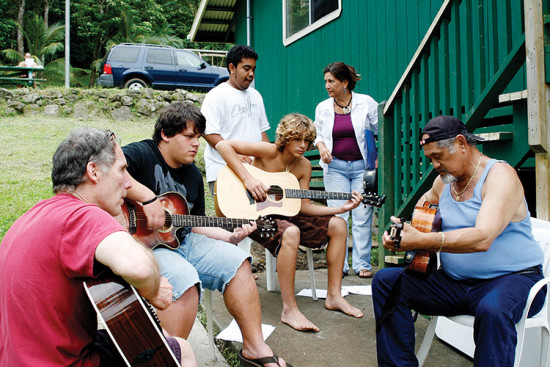
“In those days, we didn’t get music lessons, and most of the musicians I knew didn’t read music. Most of the techniques were considered to be secret and were not shared outside the family or music community. My dad would slack all of his strings and hide his guitar in the closet at night because he knew we would sneak in to try and figure out his tunings once he was asleep. That was the style in the old days; if you really wanted to learn, you had to listen,” Cyril remembers.
Once he did begin to learn, he says he’d get up at four o’clock and make breakfast so that Gabby would spend time with him before leaving for work.
“When he had shared something new, he would expect me to practice, and the next time I played, I could tell he was listening to see if I had mastered it. Then he would share something else,” Cyril says.
Like his father, Cyril has maintained a lengthy career playing Hawaiian music, recorded numerous albums, and won multiple Nā Hōkū Hanohano awards. And unlike his father, he is now beginning to share those secrets that were once so guarded by offering youth music camps.
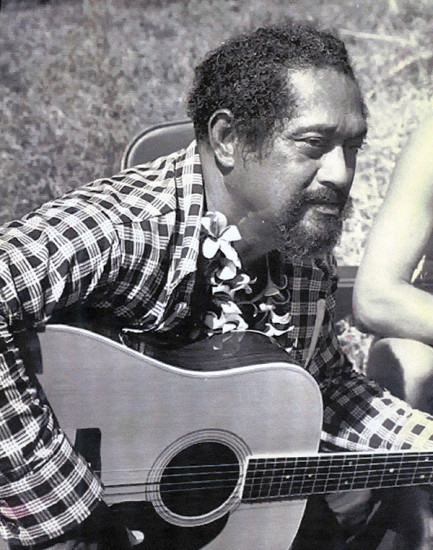
“Many of us have decided to share the secrets to keep Hawaiian language, culture, music, dance, and slack key alive for future generations. My dad was instrumental in the preservation of slack key. He traveled throughout the islands and learned as many tunings as he could,” Cyril says.
He continues, “The sharing was different than today. It was very much watch and listen and don’t ask questions. Today we put things on paper and let the students ask questions. We don’t get the kind of time with them that we had in the old days.”
Like Cyril, Keola Beamer also comes from a long line of musicians and is hailed as a great master of slack key guitar. Keola has also begun to teach, offering music camps and even an online slack key course. There’s a numerous list of slack key legendries who keep the music alive today, including Jeff Peterson, Ikaika Brown, John Keawe, Ledward Ka‘apana, and George Kahumoku, Jr., just to name a few.
It’s no wonder so many musicians continue to play, as Cyril explains there is something special about slack key guitar.
“It carries the traditions of Hawaiian music to people who are listening. My Hawaiian culture is one of the most important things in my life, and I am very proud to come from Hawai‘i. I think people recognize that and if they love Hawai‘i or dream of visiting Hawai‘i, they get a sense of how deep that emotion is. I think many traditional music styles do this,” he says.
When he plays, he can still feel the presence of his dad and some of the other guitar masters who taught him.
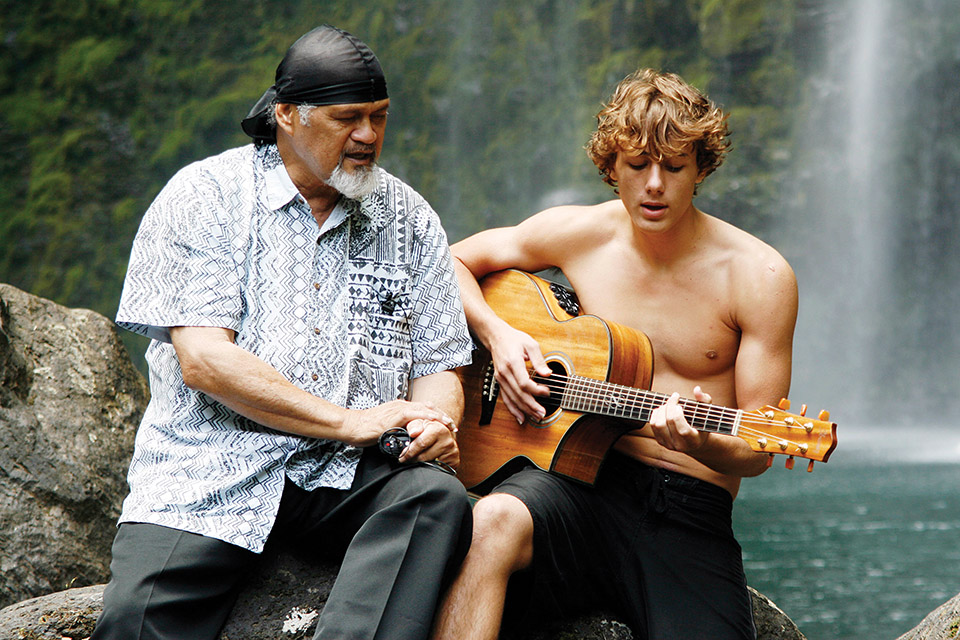
“I try to play for them and do the best I can so they will be happy with what I have done with the music they gave me. My inner voice guides me and sometimes I close my eyes and just go with the feeling. The feeling comes straight from the heart like a meditation. I feel like the music is just passing through me. I can always feel my dad’s presence when I play, and he is still the inspiration and the soul of my music,” he says.
There is still a touch of the old days lingering for Cyril, and he gets to share that with one special student: Peter Moon.
“I still have a lot of secrets that I have not shared with anyone yet. Probably the most I share is with Peter. He is like my own son and I am very proud of him and what he has learned. Sometimes we spend the weekend together and just play all day. Like in the old days.”
In truth, many exotic places play host to a tantalizing array of sights and sounds. And nowhere else is home to the sweet sound of traditional Hawaiian music. The high notes ring out like a beautiful falsetto voice, while the carefully picked, melodious undertone of low notes weave themselves into a song you wouldn’t believe can come from just one guitar. ❖
For information on monthly Slack Key shows in West Hawai‘i: WoodSongAcoustic.com, 808.960.1026
Photos courtesy of Cyril Pahinui
Contact Cyril Pahinui: CyrilPahinui.com
Contact writer Le‘a Gleason: lgfreelancehawaii@gmail.com

